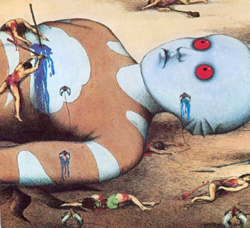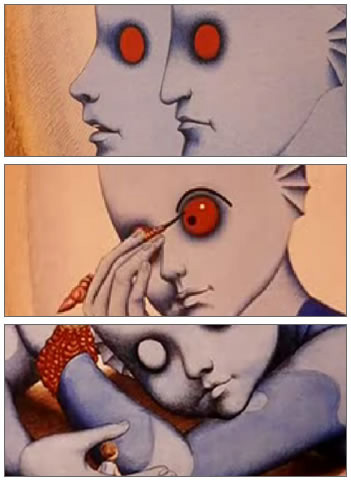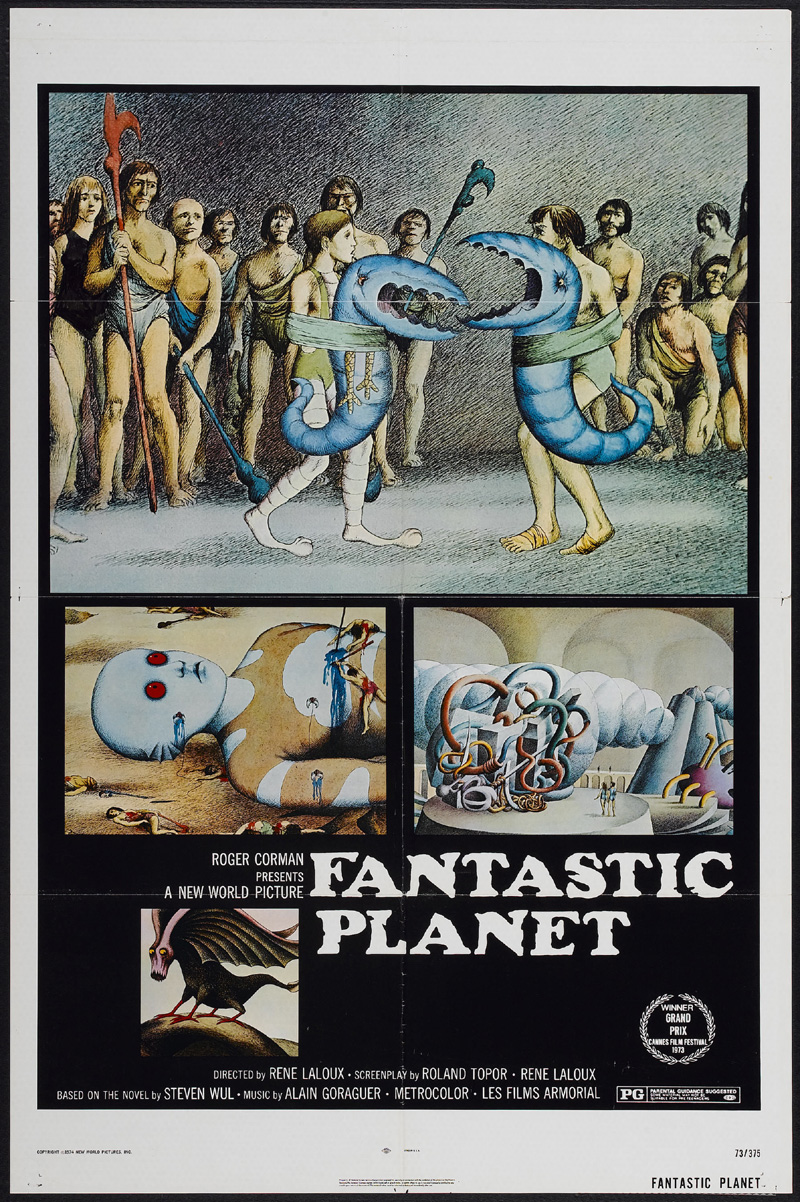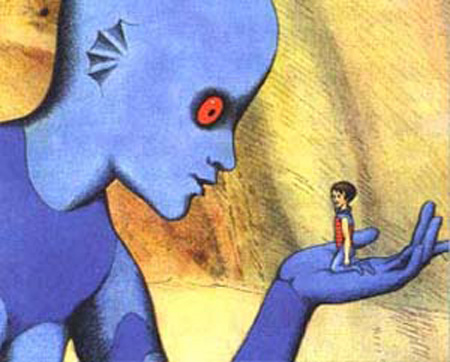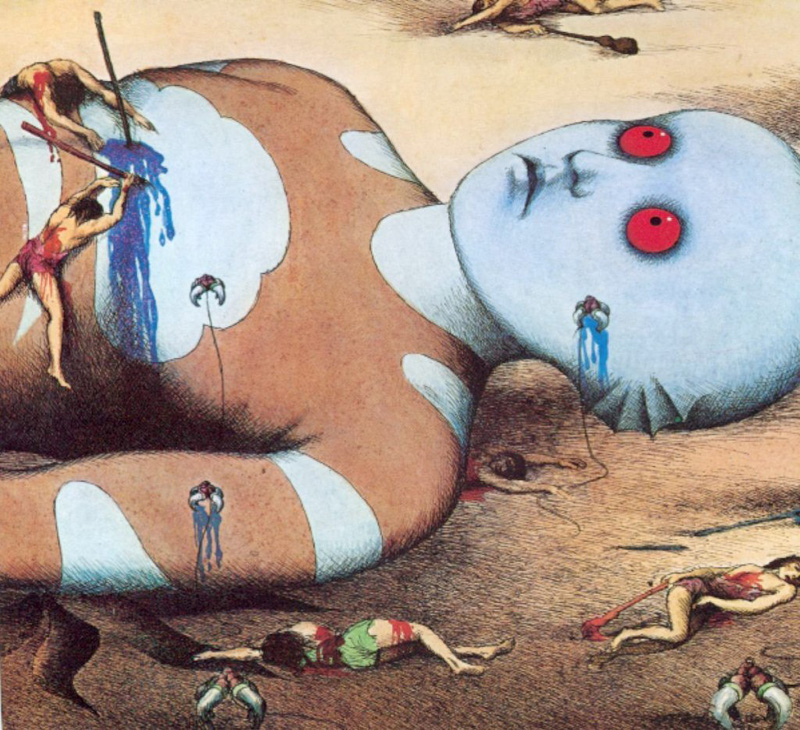Part of Summer 2009
La Planète sauvage (Fantastic Planet, France/Czechoslovakia, 1973) tells the story of an alien planet where giant, technologically sophisticated “Draags” capture tiny, primitive “Oms” for use as pets, sparking an escalating conflict that threatens to destroy both species. A potent combination of surreal whimsy and sharp political satire, the film occupies a standout place in the history of auteur animation. It might also strike a lay viewer as familiar, thanks to its broad influence on popular culture – for example, the 1980s TV series “Robotech” borrows from it heavily. For a feature film, Fantastic Planet has fairly unorthodox origins. It is adapted from the 1957 French novel Oms en série (Oms by the Dozen); the author, Pierre Pairault (1922–2003), was a moonlighting dental surgeon who wrote science fiction under the pen name Stefan Wul. The film’s director, René Laloux (1929–2004), was an art therapist who worked at a mental institution near Orléans, where he led classes in painting, theatre and puppetry. A self-taught animator, he created his first short film in 1960, based on his patients’ drawings.
In 1964, Laloux met Fluxus member Roland Topor (1938–1997), who became Fantastic Planet’s art director and also wrote the film’s screenplay. Alain Goraguer (b. 1931) composed the score; his pioneering jazz-influenced electroacoustic soundtrack is frequently sampled in pop music today. Production began in 1968 at the Jirí Trnka Studio in Prague, but was soon interrupted by the Soviet invasion of Czechoslovakia. The animators were able to secure new financing and resume work in Paris the following year, completing the film for its Grand Prix-winning premiere at Cannes in 1973.
Fantastic Planet was created using paper cutout animation, which involves slicing still illustrations into sections and moving them frame-by-frame under a camera. Some of history’s earliest animated films were made this way, but it wasn’t until the late 1960s that the approach came into wider use, appearing in Yellow Submarine and Terry Gilliam’s “Monty Python” interstitials. Because cutouts require far less raw labour power than thousands of individual drawings, the technique became a way for small studios with limited resources to produce uncompromising long-form work, much as 2D computer animation is used today in films like Waltz with Bashir and Sita Sings the Blues.
